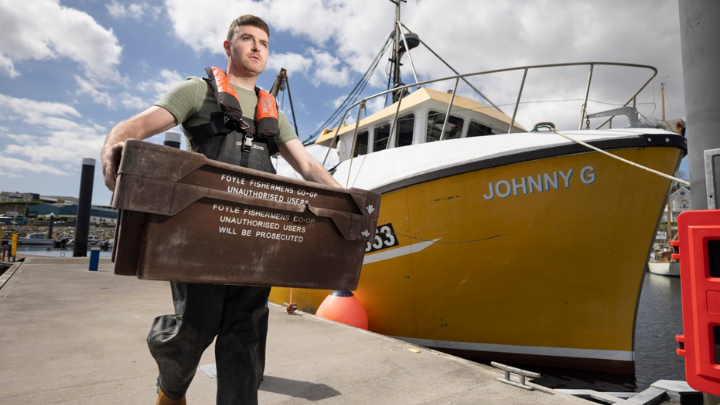About this Sector

Overview
The Irish Seafood industry is currently valued at 1.4bn euro and employs over 17,000 people.
The four main activities in the Irish seafood industry are covered by:
- Fishing – The top fishing ports in Ireland are Killybegs, Castletownbere, Dingle, Dunmore East and Kilmore Quay, but fishing vessels also land into numerous small ports around the coast.
- Fish farming - Aquaculture activity includes growing finfish, such as salmon and trout and shellfish farming, including the cultivation of mussels, oysters and scallops.
- Processing - Seafood companies produce high value products from salmon, whitefish, shellfish and pelagic fish species (eg herring, mackerel and horse mackerel) all of which generate substantial export earnings to the sector.
- Marketing - Irish seafood is sold at home and in international markets (Europe, Africa and the Far East) where exports are valued at €559 million.
Ireland has the ambition to position itself as an international leader in the global seafood industry. Read: Food Wise 2025 strategy.
Size and scope of this sector
The Irish seafood sector is an important and valuable contributor to the national economy, valued at €1.3 billion and employing almost 16,000 adults, many of whom live and work in Ireland’s coastal communities. The process of catching, growing and adding product value through seafood processing, retail and foodservice plays a key role in the cultural, social and economic fabric of coastal communities.
The seafood industry can be divided into three sectors – the catching sector, aquaculture and shellfish farming and processing. In addition there are over 1000 people employed in ancillary industries such as marine engineering, net making, ship repair and marine electronics.
Fishing vessels operate from ports all around the Irish coast whilst fish farming operations are principally located in Donegal, Connemara, West Cork, Waterford, Wexford and Carlingford Lough.
Current issues
BIM’s is working to enhance the environmental sustainability of Irish Seafood. Ecological sustainability is a basic premise for the economic and social future of European fisheries, and the development of the wider seafood sector.
The task facing Irish seafood now is to position Ireland as a key player in the supply of quality, sustainably-sourced seafood to a global market. BIM is supporting the industry’s efforts to achieve this goal through a range of initiatives built around: skills, sustainability, competitiveness and innovation. Read more here.
Anticipated changes
Bord Iascaigh Mhara (BIM), Ireland’s Seafood Development Agency announced details of a strategic plan to ensure the skills required for an innovative, professional and sustainable seafood industry are delivered.
‘The Next Wave 2023-2028’, announced in October 2023, will see a spend of €5 million over the lifetime of the plan, provided by his Department.
The strategy seeks to address a number of challenges faced by the fishing sector, as identified in an analysis of the Irish fishing fleet labour force, commissioned by BIM in 2022. In addition to delivering skills that are currently required, BIM will determine and plan for future skill requirements, ensuring business and technical skills.
The Irish seafood sector is an important and valuable contributor to the national economy, valued at €1.3 billion in 2022 and employing almost 16,000 adults, many of whom live and work in Ireland’s coastal communities. The process of catching, growing and adding product value through seafood processing, retail and foodservice plays a key role in the cultural, social and economic fabric of coastal communities.
‘The Next Wave 2023-2028’ can be viewed here
Interesting statistics
The Irish Seafood industry’s contribution of more than 1.24billion euro to the national economy and provides employment for almost 17,000 people. It is a key economic driver in our coastal communities. www.bim.ie

The female participation rate on BIM’s training courses averages 15%, with a higher proportion working in aquaculture and processing. Young women have also progressed through BIM’s training courses and gained experience at sea in order to study for their Certificates of Competency as skippers of fishing vessels.
Current skills shortages
There are job opportunities in all sectors of the Irish seafood industry.
Currently the industry is experiencing difficulty in employing Deck Hands for boats over 17 metres. At present these jobs are filled mainly by non EU nationals. You must complete a training course accredited by BIM in order to seek employment in this area.
For those with an adventurous disposition who would prefer an outdoor life, BIM’s training courses for the catching, aquaculture and processing sectors are an ideal way to learn a wide range of skills which will enable them to access a variety of interesting job opportunities on fishing vessels, fish farms and shore based processing operations.



